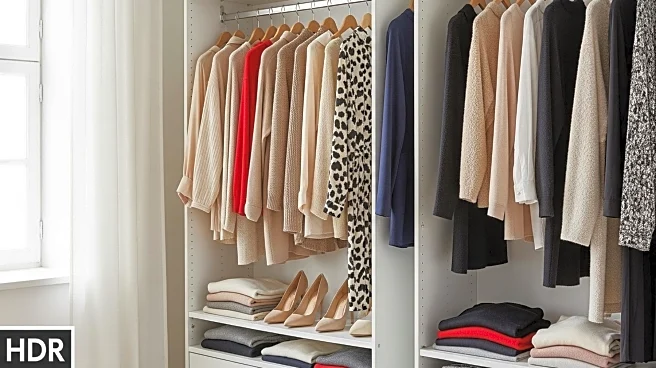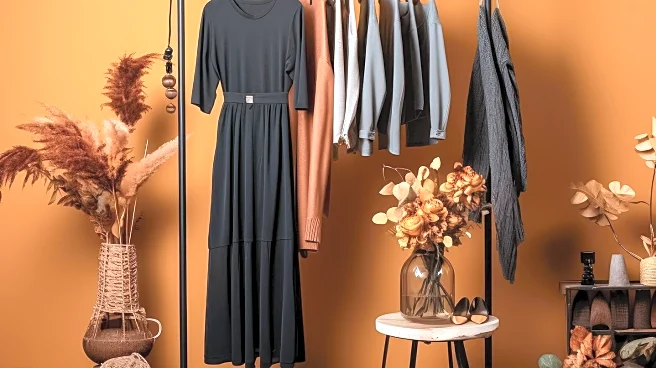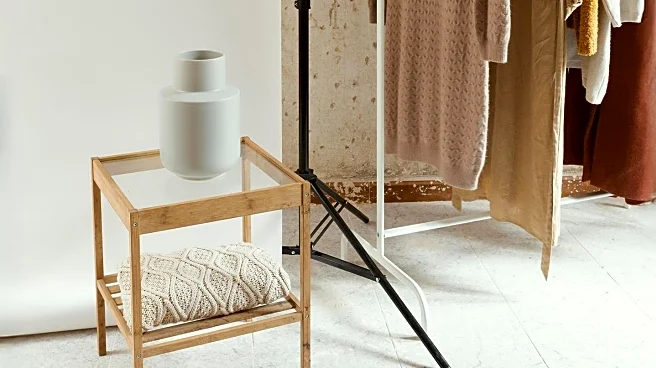What's Happening?
H&M's first design director, Margareta van den Bosch, is celebrated in a new book titled 'Team Maggan: H&M’s First Design Director and Coworkers on Fashion, People and Possibilities.' The book, authored by former H&M staffer Catarina Midby, explores the collaborative efforts behind H&M's design processes, highlighting the diversity of roles and functions within the company. Van den Bosch, known for initiating high-profile designer collaborations, reflects on the evolving fashion landscape, noting the increased presence of influencers at fashion shows and the growing interest in fashion among diverse groups. The book also discusses the rise of domestic resale, projected to grow significantly by the end of the decade, driven by Gen Z's interest in fashion.
Why It's Important?
The book underscores the importance of collaboration in the fashion industry, particularly in large retail chains like H&M. By highlighting the teamwork behind H&M's design success, it offers insights into how fashion companies can innovate and adapt to changing consumer preferences. The focus on resale trends reflects a shift in consumer behavior, with younger generations prioritizing sustainability and individuality in fashion choices. This trend could influence retail strategies and product offerings, as companies seek to cater to the growing demand for unique and sustainable fashion options.
What's Next?
The book's release may inspire other fashion companies to explore collaborative design approaches and emphasize teamwork in their creative processes. As the resale market continues to grow, fashion retailers might increasingly focus on sustainable practices and circular fashion models. Additionally, exhibitions like 'Superfine: Tailoring Black Style' at the Metropolitan Museum of Art could encourage more cultural exploration in fashion, potentially leading to more diverse and inclusive fashion narratives.
Beyond the Headlines
The book's emphasis on collaboration and diversity in fashion design highlights broader cultural shifts towards inclusivity and shared creativity. It suggests a move away from traditional hierarchical structures in fashion, promoting a more democratic and accessible industry. This could lead to more innovative and varied fashion offerings, as diverse voices and perspectives are integrated into the design process.










